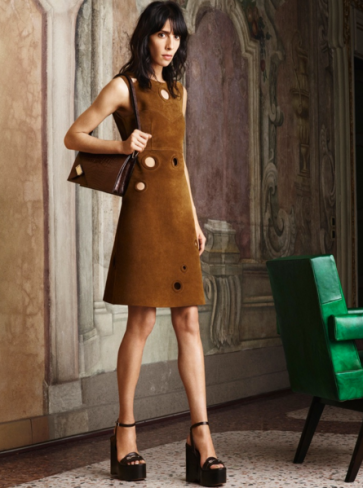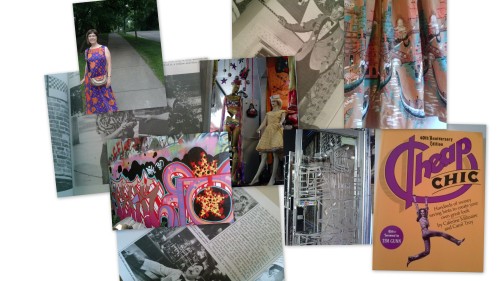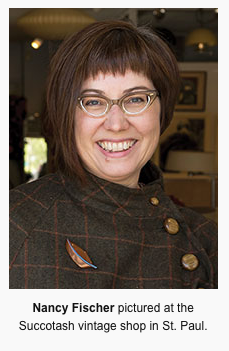I was paging through the latest Elle magazine, looking at one of the Trends pages, when I spotted a blouse with puffed sleeves. Elaborate blouses with ruffles, voluminous sleeves and other types of flounces are in this summer. The pictured blouse turned out to be from Zara, which has quite a few variations on these romantic looks.



On one hand, I think “Fresh, new fun sleeves!”
On the other hand, I think, “Where have I seen these before?” I paged through my copy of How to Read a Dress by Lydia Edwards, and sure enough, there were the sleeves, on dresses from the 1830s.
Many vintage enthusiasts like to look at the latest fashions and find the vintage “original” versions. If you love the Victorian ruffles and Regency sleeves, you may be thinking “Well, I’m only going to see those in a museum, not in my local vintage shop.”
But you just might see styles like this in the 1970s and 1980s sections of your favorite vintage store. Some of you might be old enough to recall Gunne Sax prom dresses from the late 1970s or Princess Diana’s leg-of-mutton sleeves on her gowns. The 1970s and 1980s witnessed revivals of Regency and Victorian styles of dresses and blouses.
In fact, Victorian and Edwardian blouses and dresses were the first styles that were worn when wearing “vintage” was first becoming a trend in the late 1960s. Hip, edgy fashion-conscious youth would shop thrift stores and find original Victorian and Edwardian garments.
I’m currently writing a book about vintage style, and one question I often encounter is “What kinds of vintage styles were in during the _______?” (Fill in the blank with the 1970s, 1980s, 1990s, etc.). Vintage style changes along with the looks that are currently on the runways. Vintage shops in the 1980s were often destinations for 1940s and 1950s looks, while the 1960s were more popular in the 1990s.
Here’s the table I’ve been working on that summarizes what vintage looks were in when. Notice that I start each decade mid-decade rather than at the beginning. That’s because often a decade’s iconic style isn’t apparent until mid-decade, as this recent New York Times article shows when it declares – in 2017, mind you – that the style of the 2010s can finally be discerned as “covered” (i.e. modest dress). Anything that you’d add to this table summarizing what vintage styles were in for whom and from what influences? Maybe we can predict the next vintage trend…..

Copyright 2017, Nancy L. Fischer






















